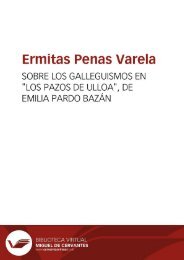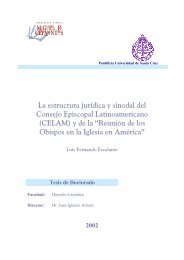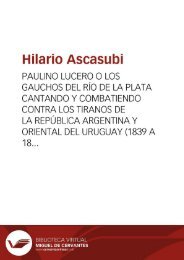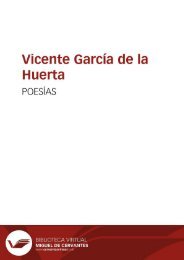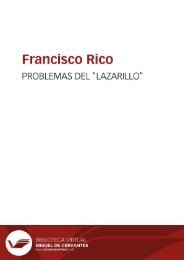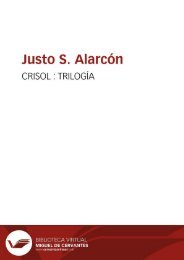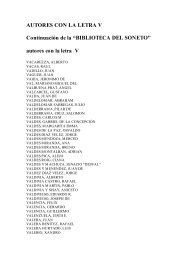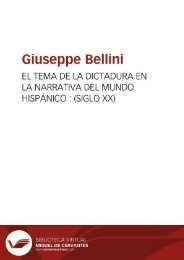You also want an ePaper? Increase the reach of your titles
YUMPU automatically turns print PDFs into web optimized ePapers that Google loves.
Anales galdosianos [Publicaciones periódicas]. Año XII, 1977<br />
story of Manso's gradual approach to the life of action and the emotions, but his failure withdraws him<br />
from life once more -again in the double sense. When Manso's story is told, when <strong>Galdós</strong> has finished<br />
with him, he meekly accepts his creator's dictum (unlike his literary descendent, Unamuno's Augusto<br />
Pérez) and dies without sufficient natural cause and without resistance. Rather than autonomous, he is<br />
its opposite: dependent -the passive agent of <strong>Galdós</strong>' creative act. Máximo tells Doña Javiera: « He<br />
dado mi fruto y estoy de más » (222). When she claims not to recognize his «fruit», he makes his only<br />
positive statement, but without clarifying its meaning: « Invisible es todo lo grande, toda ley, toda<br />
causa, todo elemento activo » (222). Later he claims -in passages most of which we have already<br />
quoted- to have left little behind him in others, while memory of him has faded rapidly away. The<br />
passivity/ failed activity/return to passivity structure of his story is complete, and he goes back -so<br />
willed by his creator- to what he had called at the beginning the « frío aburrimiento de estos espacios<br />
de la idea » (10), or to what is now seen as sosiego (223) as opposed to the dolor (11) of human life.<br />
The ambiguities of the novel largely evolve from <strong>Galdós</strong>' capacity for combining opposites and his<br />
related talent for creating dichotomous characters. The latter include those with whose ideas or way of<br />
life <strong>Galdós</strong> disagrees, but for whom he expresses compassion (Torquemada), and those who are made<br />
ridiculous as people, but whose ideas are close to those of the author (Bailón). Such ambiguity is found<br />
in El amigo Manso , but more problematic still is the question of Manso as narrator (and therefore<br />
interested party) of his own life. Early statements such as « Adquirí cierta presunción pedantesca y<br />
un airecillo de autoridad del que posteriormente, a Dios gracias, me he curado por completo » (15)<br />
are disproved by the remainder of the work and reveal the narrator's unreliability. Clarification of the<br />
matter is of no less importance for El amigo Manso than it is for that other great experiment in first<br />
person narrative voice, Lo prohibido . The temporal perspective of the narrator is also a puzzle in<br />
relation to the above. Manso tells us that he is thirty-five and that the major action he will describe<br />
occurs in the space of a year (11), yet he dies «naturally» at the end. If the entire novel is narrated<br />
after the fact -as it would seems to be- rather than in medias res , interpretative difficulties multiply.<br />
On the night that Manuel had persuaded Manso to accompany him to the buñolería , Máximo's<br />
claim that the education being given his pupil was obviously not taking root is followed by « -¡Oh!,<br />
no -exclamó Peña con vehemencia, dándose una puñada sobre el corazón y un palmetazo en la frente-.<br />
Algo queda. Mucho hay aquí y aquí, maestro, que permanecerá por tiempo infinito. Esta luz no se<br />
extinguirá jamás, y mientras haya espacio, mientras haya tiempo... » (92). Manuel is not speaking<br />
seriously, of course. The setting, the gestures, and the hyperbole make that clear, but Manso's story<br />
makes even clearer that he was occasionally unrealistic enough to believe that the man of thought<br />
86







